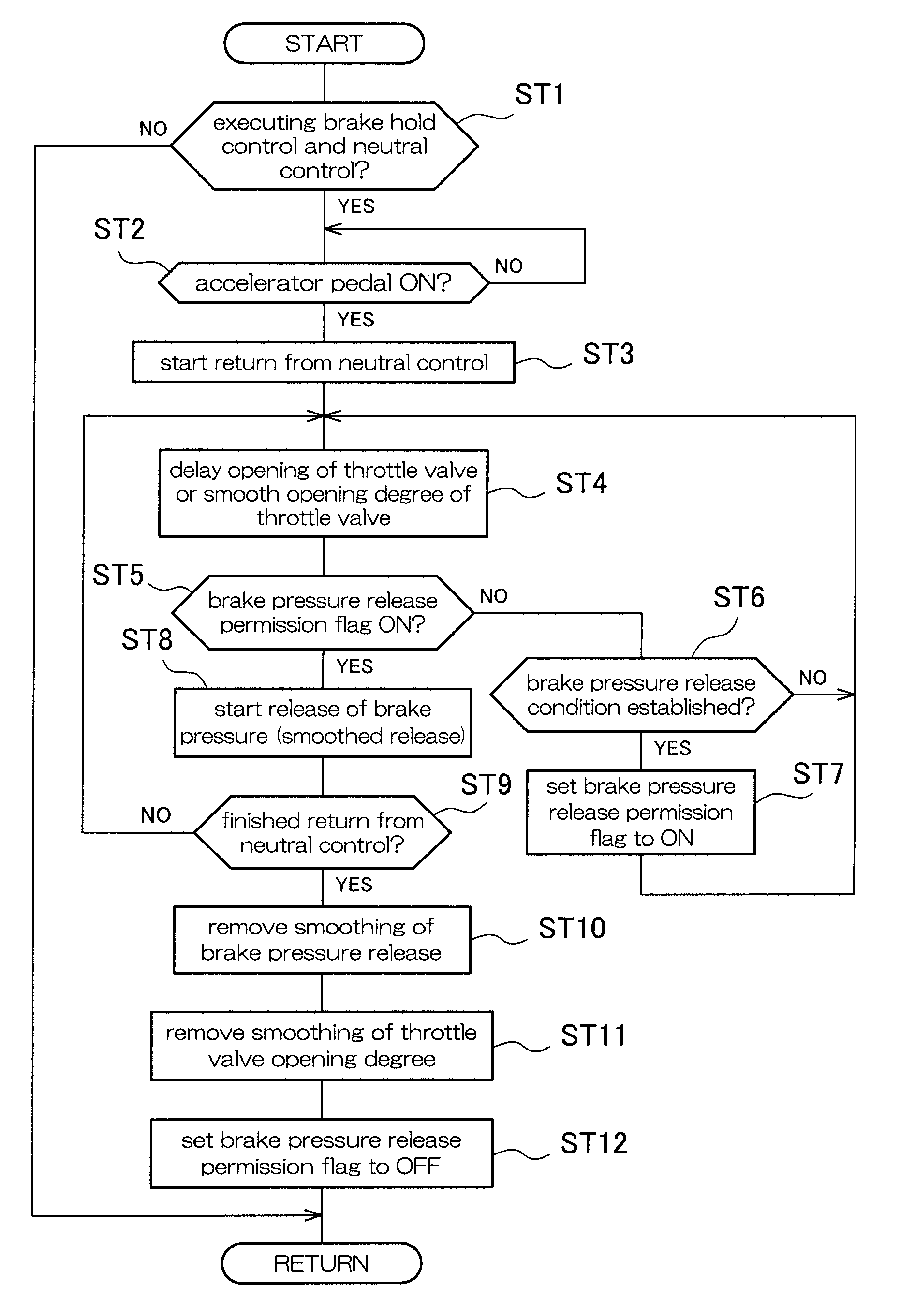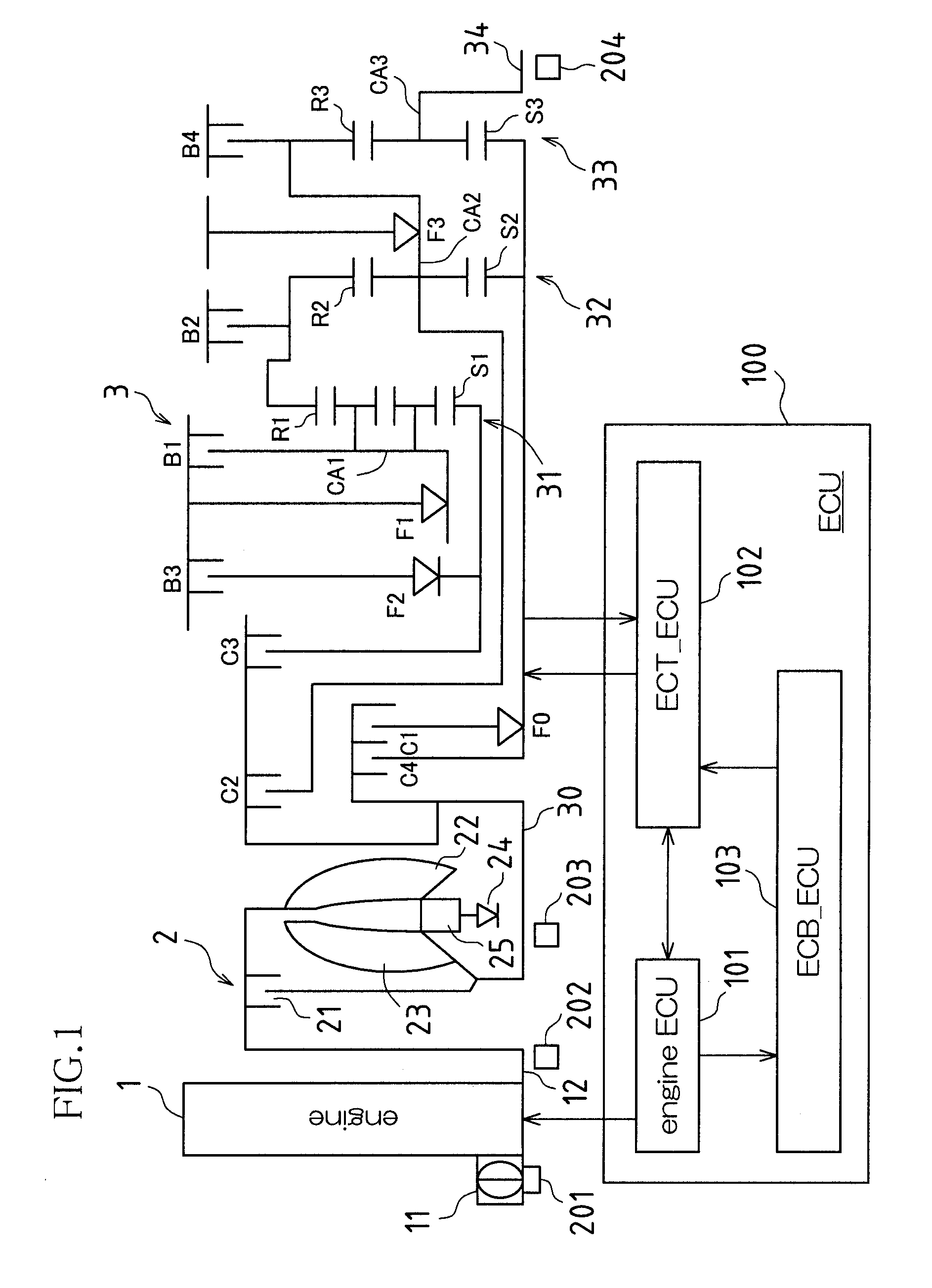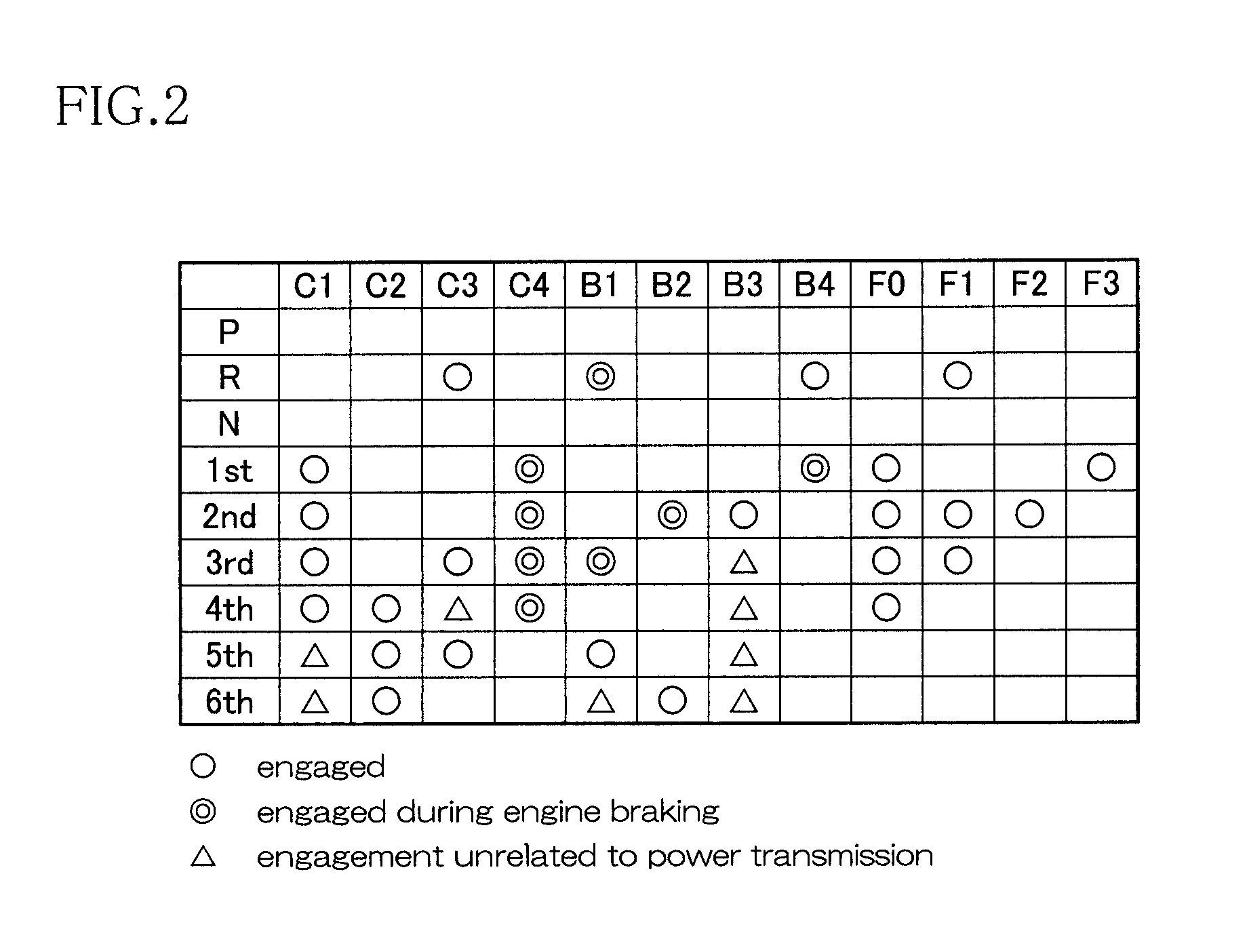[0020]The present invention was made in consideration of such circumstances, and it is an object thereof to provide a
vehicle control apparatus that, in a circumstance in which a neutral control is being executed during execution of a brake hold control, when returning from the neutral control in response to a demand to start forward vehicle movement, is capable of suppressing a shock when returning from the neutral control.
[0021]The present invention provides a control apparatus for a vehicle comprising an
internal combustion engine and an automatic transmission having a forward clutch that is engaged when the vehicle starts moving forward, the vehicle control apparatus including a neutral control unit that executes a neutral control that sets
power transmission of the forward clutch to not more than a predetermined value while the vehicle is stopped, a brake hold control unit that executes a brake hold control that preserves braking force of the vehicle regardless of operation of a brake pedal, and an engine torque control unit that, in a circumstance in which the neutral control is being executed during execution of the brake hold control, when there has been a demand to start forward vehicle movement, starts a return from the neutral control, and when returning from the neutral control, smoothly increases the engine torque of the internal
combustion engine regardless of an accelerator opening degree.
[0022]According to the present invention, it is possible to suppress an early increase in the engine torque of the internal
combustion engine when returning from the neutral control, so
controllability of the forward clutch of the automatic transmission is improved. Thus, it is possible to suppress a shock when returning from the neutral control.
[0023]In the present invention, it is preferable that the start of increasing the engine torque of the internal
combustion engine is delayed for a predetermined length of time after the point in time that there was a demand to start forward vehicle movement. Also, it is preferable that a slope of the increase in the engine torque of the internal combustion engine (for example, a slope of the increase in a
throttle opening degree) is limited to not more than a predetermined value. By adopting such a configuration, it is possible to more effectively suppress a shock when returning from the neutral control.
[0024]In the present invention, it is preferable to preserve braking force of the vehicle when returning from the neutral control, thus preventing backward movement of the vehicle when returning from the neutral control. Also, it is preferable that during the return from the neutral control, braking force is smoothly released by limiting a slope of release of braking force to not more than a predetermined value.
[0025]In the present invention, it is preferable to start releasing braking force at a point in
time delayed for a predetermined length of time from the point in time that there was a demand to start forward vehicle movement (the point in time of starting the return from the neutral control). By, in this manner, not starting the release of braking force immediately after starting the return from the neutral control, but rather, starting to release braking force at a point in time that a predetermined length of time has passed since starting the return, it is possible to preserve
brake pressure until the forward clutch has adequate engaging force to prevent backward vehicle movement, and thus it is possible to more reliably prevent backward movement when the vehicle begins moving forward on a sloped road (when ascending).
 Login to View More
Login to View More  Login to View More
Login to View More 


